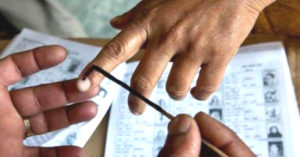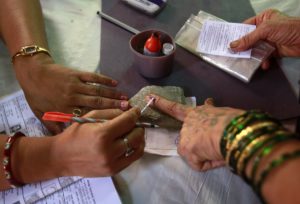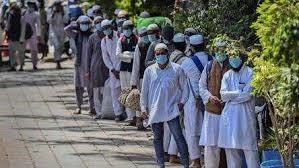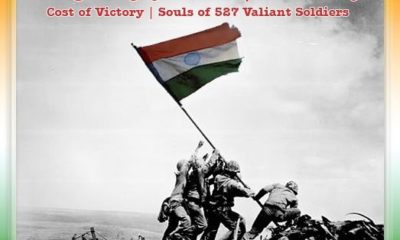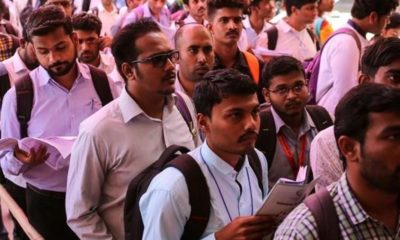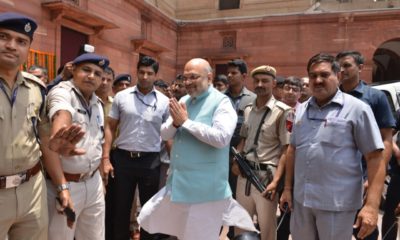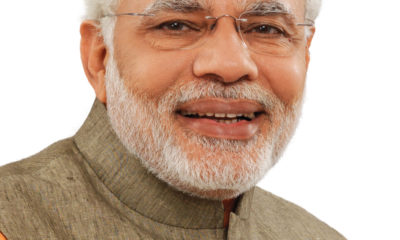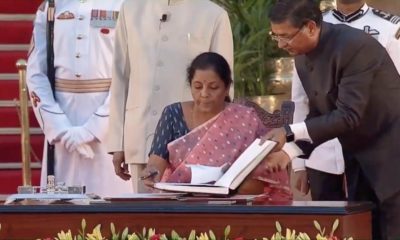Feature
India to go for voting across 15 states on Tuesday in 3rd phase of LS polls
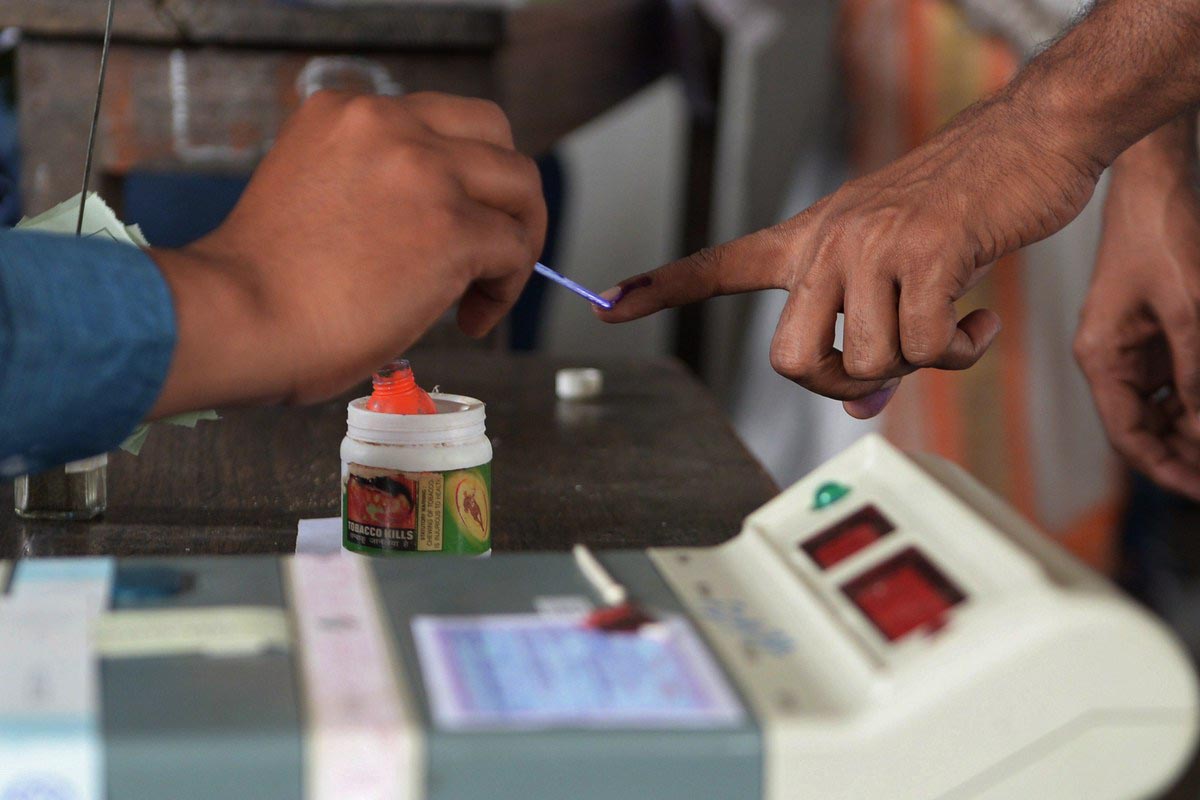
New Delhi: People in 15 states will vote on Tuesday in the third phase of Lok Sabha elections scheduled for Tuesday which will see a maximum of of 117 seats going to the polls in a single phase of seven-phased election.
Voting will be completed in all seats of Gujarat, Kerala, Goa, Karanataka, Chhattisgarh, Assam, Karnataka, Kerala, Dadra and Nagar Haveli and Daman and Diu with the third phase polls.
The presidents of the two main political parties are in fray in the third phase with BJP chief Amit Shah making his Lok Sabha election debut from Gandhinagar and Congress President Rahul Gandhi contesting from Wayanad.
The Bharatiya Janata Party (BJP) will aim to defend the 62 of the 117 third phase seats it won in 2014 and its performance in this phase will be crucial in deciding its political fortunes.
The Congress had won 16 seats, while the remaining seats were divided between BJD (6), CPI-M (7), NCP (4), Samajwadi Party (3), Shiv Sena (2), RJD (2), AIUDF (2), IUML (2), LJP (1), PDP (1), RSP (1), Kerala Congress-M (1), CPI (1), Swabhimani Paksha (1) and Trinamool Congress (1). Three seats were won by Independent candidates.
This time the BJP will be tested in its bastion Gujarat — where polling will be held for all the 26 Lok Sabha seats — apart from Karanataka, Chhattisgarh and Uttar Pradesh, where the party had done well in 2014.
In 2014, the BJP won all the 26 seats in Gujarat, 11 of 14 in Karnataka, 8 of 10 in Uttar Pradesh, 6 of 7 in Chhattisgarh, 6 of 14 in Maharashtra, both the seats in Goa and one seat each in Assam, Bihar, Dadra and Nagar Haveli and Daman and Diu.
Gujarat being the home state of Prime Minister Narendra Modi, the BJP would again look for a clean sweep in the state. However, the Congress, which gave a tough fight to the BJP in the Assembly polls held in 2017, is hoping to win 10 to 15 seats this time.
The three young Gujarat leaders — Hardik Patel, Alpesh Thakor and Jignesh Mewani — whose positions had helped the Congress build a narrative against the BJP during the Assembly elections, are not in the fray for the Lok Sabha polls.
Patidar agitation leader Patel, who joined the Congress last month, cannot contest due to his conviction in a rioting case, while Thakor quit the Congress earlier this month.
In Karnataka, the BJP is considered to have strong footing in many of the 14 seats going to the polls on Tuesday. However, the saffron party faces tough challenge from the Congress-JD-S combine.
Moreover, its vote share too dipped in the Assembly polls held in Karnataka last year as compared to the 2014 Lok Sabha elections. In the Assembly elections, the BJP had polled lesser votes than the Congress but got more seats.
The BJP faces a strong challenge in Uttar Pradesh, as the third phase of Lok Sabha elections will be fought in the “Yadav belt”.
The Samajwadi Party (SP) strongholds of Mainpuri, Badaun and Sambhal will go to the polls on Tuesday and the party’s prospects have received a considerabe boost following its alliance with the Bahujan Samaj Party (BSP). The Congress too is also likely to cut into BJP votes.
Third phase polling on Tuesday across 15 Indian states during Lok Sabha polls:
Pragatisheel Samajwadi Party (Lohia) President Shivpal Singh Yadav, who is contesting from Firozabad against his nephew and SP candidate Akshay Yadav, has been cautioning the people against the SP-BSP combine.
SP patriarch Mulayam Singh Yadav is contesting from Mainpuri. The joint rally held in the constituency on Friday, in which BSP supremo Mayawati, Mulayam Singh Yadav and Akhilesh Yadav shared the stage, is likely to boost the prospects of the SP candidates.
In Maharashtra, the third phase of polling will be held in some NCP strongholds, including Baramati, Madha, Kolahpur and Satara. Nationalist Congress Party (NCP) President Sharad Pawar’s daughter Supriya Sule is contesting from the party’s bastion in Baramati.
The Congress and the NCP have dominated the local bodies and cooperatives in the sugar belt of the state, which has of late been challenged by the BJP-Shiv Sena combine. The Lok Sabha results will show if the NCP is able to regain its earlier dominance in the region.
In Chhattisgarh, the BJP has sought to beat the anti-incumbency wave against its sitting MPs by replacing all of them. Here the saffron party faces a renewed challenge from the Congress, which returned to power in the state in 2018 after 15 years. The Congress is focusing more on local issues, telling the voters that its government has quickly delivered on its promises.
Of the five seats in Bihar, the BJP had won only one in 2014 and it is again contesting one seat this time. Janata Dal (United), the BJP’s ally in the National Democratic Alliance (NDA), is contesting three seats while the Lok Janshakti Party (LJP) is contesting one seat.
As part of the grand alliance, the Rashtriya Janata Dal (RJD) is contesting three seats, while the Congress and the Vikasheel Insaan Party (VIP) are contesting one seat each.
The key contest is in Madhepura, where sitting MP Pappu Yadav, who had won on a RJD ticket in 2014, is contesting for the Jan Adhikar Party, a political outfit floated by him in 2015. He is up against RJD candidate Sharad Yadav.
In Odisha, the third phase of elections will witness a battle between several political heavyweights as well as former bureaucrats.
Puri will witness a triangular fight between spokespersons of three major political parties, as two-time sitting MP and BJD spokesman Pinaki Mishra will cross swords with BJP’s national spokesperson Sambit Patra and state Congress media cell Chairman Satya Prakash Nayak. Dhenkanal is also expected to witness a triangular fight.
In the four constituencies of lower Assam that will go to the polls on Tuesday, both the Congress and the All India United Democratic Front (AIUDF) are seeking to gain votes by targeting the BJP over its stance in support of the Citizenship (Amendment) Bill.
The AIUDF has accused the Congress of not adhering to “gentleman’s agreement” between the two parties under which the regional party did not put up candidates on 11 seats and was expecting the Congress to field “weak candidates”. Congress, however, has said that it had no such arrangement.
The Congress will look to swell its tally in Kerala with Rahul Gandhi in the fray from Wayanad. The party had won 8 of the 20 seats in 2014 while a few more were won by its allies. The BJP too is seeing a realistic chance to win four seats in the southern state.
In West Bengal where it faces a multi-cornered challenge from the Trinamool Congress, the BJP and the CPI-M, the Congress will seek to at least retain the three seats it won in 2014.
Entertainment
Meghalaya Reserves Legalized Gambling and Sports Betting for Tourists

The State Scores Extra High on Gaming-Friendly Industry Index
Meghalaya scored 92.85 out of 100 possible points in a Gaming Industry Index and proved to be India’s most gaming-friendly state following its recent profound legislation changes over the field allowing land-based and online gaming, including games of chance, under a licensing regime.
The index by the UK India Business Council (UKIBC) uses a scale of 0 to 100 to measure the level of legalisation on gambling and betting achieved by a state based on the scores over a set of seven different games – lottery, horse racing, betting on sports, poker, rummy, casino and fantasy sports
Starting from February last year, Meghalaya became the third state in India’s northeast to legalise gambling and betting after Sikkim and Nagaland. After consultations with the UKIBC, the state proceeded with the adoption of the Meghalaya Regulation of Gaming Act, 2021 and the nullification of the Meghalaya Prevention of Gambling Act, 1970. Subsequently in December, the Meghalaya Regulation of Gaming Rules, 2021 were notified and came into force.
All for the Tourists
The move to legalise and license various forms of offline and online betting and gambling in Meghalaya is aimed at boosting tourism and creating jobs, and altogether raising taxation revenues for the northeastern state. At the same time, the opportunities to bet and gamble legally will be reserved only for tourists and visitors.
“We came out with a Gaming Act and subsequently framed the Regulation of Gaming Rules, 2021. The government will accordingly issue licenses to operate games of skill and chance, both online and offline,” said James P. K. Sangma, Meghalaya State Law and Taxation Minister speaking in the capital city of Shillong. “But the legalized gambling and gaming will only be for tourists and not residents of Meghalaya,” he continued.
To be allowed to play, tourists and people visiting the state for work or business purposes will have to prove their non-resident status by presenting appropriate documents, in a process similar to a bank KYC (Know Your Customer) procedure.
Meghalaya Reaches Out to a Vast Market
With 140 millions of people in India estimated to bet regularly on sports, and a total of 370 million desi bettors around prominent sporting events, as per data from one of the latest reports by Esse N Videri, Meghalaya is set to reach out and take a piece of a vast market.
Estimates on the financial value of India’s sports betting market, combined across all types of offline channels and online sports and cricket predictions and betting platforms, speak about amounts between $130 and $150 billion (roughly between ₹9.7 and ₹11.5 lakh crore).
Andhra Pradesh, Telangana and Delhi are shown to deliver the highest number of bettors and Meghalaya can count on substantial tourists flow from their betting circles. The sports betting communities of Karnataka, Maharashtra, Uttar Pradesh and Haryana are also not to be underestimated.
Among the sports, cricket is most popular, registering 68 percent of the total bet count analyzed by Esse N Videri. Football takes second position with 11 percent of the bets, followed by betting on FIFA at 7 percent and on eCricket at 5 percent. The last position in the Top 5 of popular sports for betting in India is taken by tennis with 3 percent of the bet count.
Local Citizens will Still have Their Teer Betting
Meghalaya residents will still be permitted to participate in teer betting over arrow-shooting results. Teer is a traditional method of gambling, somewhat similar to a lottery draw, and held under the rules of the Meghalaya Regulation of the Game of Arrow Shooting and the Sale of Teer Tickets Act, 2018.
Teer includes bettors wagering on the number of arrows that reach the target which is placed about 50 meters away from a team of 20 archers positioned in a semicircle.
The archers shoot volleys of arrows at the target for ten minutes, and players place their bets choosing a number between 0 and 99 trying to guess the last two digits of the number of arrows that successfully pierce the target.
If, for example, the number of hits is 256, anyone who has bet on 56 wins an amount eight times bigger than their wager.

